Self-defined as heterodox, economist Matías Kulfas has worked with Alberto Fernández from the start. Currently Productive Development Minister, the 48-year-old considers fiscal balance to be just as important as economic engineering by the state.
Following an April which, in his judgement, was “the worst month in Argentine history,” he sees signs of economic revival. The key lies in changing the productive mix, an objective which needs consensus, he argues.
In the post-pandemic period there will be state activism to support various sectors, will it protect the hardest-hit areas or stimulate the most dynamic?
Our vision is sometimes defined as interventionism. We believe in an active state on the spot which does not supplant the market but complements and guides it.
The best international experiences of development are not many. They are those which managed to take countries out of poverty or transform them into middle-income developing nations. If we analyse them, we see that they are countries which managed to build states interweaving sound macroeconomic policies with an active productive development.
In that sense our vision is that Argentina cannot do without any sector. We do not believe in any productive euthanasia, common enough among some professional economists or political sectors.
There will be some dynamic sectors strongly driven. Construction is one activity which has been badly hit, falling over the last three years. We see it as an element with much to contribute towards economic recovery. Its relatively low-cost structure today is an incentive for investment. In the manufacturing industry we note a lot of delayed consumption.
The policies of this government, the signals we’ve given have prompted many companies hard hit by the previous government to relaunch their production – industries linked to the domestic market. We also value highly dynamic activities: software, services and other activities based on knowledge industries will be protagonists of recovery. Some companies created jobs in the depths of the pandemic – few enough but there were some.
Agriculture is a dynamic activity. We have various projects to add value there, to advance in the meat industry. I would add the energy sector. There are many sectors. It will not be a selective question of “this one yes and that one no.” There will be tailor-made suits for every situation.
Will those more dynamic activities change in the course of the exit from pandemic? Might some be more dynamic permanently and others more dynamic cyclically?
Yes, construction is an activity which will have an important momentum. We are working on specific incentives with the sector. Knowledge industries have been surging strongly all century. In 2004, when the Néstor Kirchner government passed the software law, it was a sector exporting around US$200 million and employing some 30,000 people. Today it exports US$2 billion, 10 times more, with four times more jobs. Some dynamic activities will follow these lines and others will have different moments.
How will the microeconomic feed into the macroeconomic?
We found a structural crisis at macroeconomic level. At regular intervals there are external crises in an economy lacking dollars. The best way to resolve this is not to take on debt, which is a short-term stopgap for a cyclical problem. The structural approach is for Argentina to have policies of productive development increasing exports and improving the capacity and efficiency of the domestic productive system to produce the goods which it imports today. That’s what will bring sustainability. We’ve had the pandemic but the objective from here on will be to generate that combo of export activities and hard currency savings for greater local production.
Can you stimulate private investment and attract foreign capital without re-establishing confidence?
It’s a process which cannot be achieved from one day to the next. We found an economy in tremendous disarray with an unsustainable debt which luckily is being restructured. The Economy Ministry is solving a very significant inherited problem, a fiscal deficit of 4.5 percent of Gross Domestic Product, very complex difficulties. We’re not going to work that out from one day to the next. Restructuring productive capacity is the central element.
So could we say that confidence cannot be restored without macroeconomic stability?
We must put the productive machinery as a whole in motion. The Argentine experience shows that the return of a certain productive capacity is what generates funds. On the external front there is a greater capacity to earn dollars and on the fiscal front more revenue due to greater economic activity. That’s the macroeconomic path which advances towards stability.
Is it possible to increase exports with an 85 percent gap between official and other exchange rates?
The exchange rate for the dollar is a cyclical question. It will not be like that in the years to come.
Today we have the situation of inheriting a very significant macroeconomic and productive crisis, to which must be added coronavirus, one of the most serious crises in the history of capitalism. I hope it does not last long but it is unprecedented and its dimensions unknown.
Furthermore, we are undergoing an internal process marked by negotiations with international creditors, elements adding uncertainty. We think that is going to be resolved.
How do you develop capital and financial markets with the restrictions implied by a country with a culture of two currencies?
My mum told me about the ‘Rodrigazo’ [ inflationary outburst of 1975] and afterwards we passed through the crises at the end of the dictatorship, the hyperinflation of 1989 and the corralito. Argentines remember these crises as monetary problems, thus generating a pattern of two currencies. I don’t believe it’s a cultural problem. It’s an economic problem to be resolved precisely by changing those conditions.
An economic trait which leaves a cultural wound.
I don’t think it’s an anthropological problem, that Argentines have an existential taste for the dollar, no. It’s an economic question. Brazil resolved it over a couple of generations with strongly positive real interest rates. That generated problems which explain Brazil’s low growth. In Argentina it’s a structural problem which will not be resolved in this term of government. If we succeed in transforming the productive structure and boosting exports, we’ll be taking the first steps towards the bases of a new and more reliable system.
How long will the defensive labour measures, like double severance, continue before going on the offensive to create more jobs?
We hope that we can go on the offensive as soon as possible. Our reality today is an international crisis. We have the focus of the pandemic installed here in the Buenos Aires Metropolitan Area (AMBA), leaving us in a situation yet to be resolved.
From the economic viewpoint, we have learnt to co-exist with the pandemic. Today the industrial sector is functioning normally in many cases or adapting to the new norms. Some of the auto industry is exporting and activity is again pretty dynamic. We are in a transitional stage. There won’t be any D-day in which we can say that the pandemic is over. It will be a linear and progressive process.
The most bulging file on the desk would be the ATP labour subsidies.
We began in late March. It was a joint effort between the colleagues of the Economic Cabinet to design, implement and pay for this assistance. For the next edition we are thinking of a mechanism granting access to financing as a subsidy subject to creating employment. For the companies hiring employees in the next few months, that credit will turn into a subsidy, a strategic booster in the offensive to create jobs.
How do you go about calibrating and balancing the need to reduce the subsidies and assistance with more incentives to invest?
It’s a process. We have a very active and highly coordinated Economic Cabinet. We see that the economy is recovering. We had a brutal fall in April. It will surely remain registered as the worst month in the country’s economic history. From there we see a continuous and systematic recovery. We are maybe already reaching pre-pandemic levels, heterogeneously because some sectors are very hard hit such as tourism, leisure and restaurants. Others are strongly raising the levels of consumer demand and industrial production.To the degree that the economy generates employment, social assistance can be substituted by wages, which is what we are looking for. With recovery and in an extreme scenario, perhaps some day we will be able to eliminate social plans completely.
Argentina’s economic problems are not inflation nor monetary nor the short term but structural. Are they solved by the public sector saving more to finance the private sector, given that we cannot expect external financing?
To generate the conditions for greater investment by private capital, the public sector has a fundamental role here and all over the world – generating suitable conditions, devising sectorial stimuli, steering business towards those activities which the country really needs.
Some fellow-economists see the fiscal programme as the central axis. We think that the fiscal difficulties are the consequence of the structural problems. A lot of people talk about the size of the public sector. They should see that much of the spending is inflexible because a huge part consists of pensions.
For many years the public sector averaged around 30 percent of GDP and now (before this moment) it reached 47 percent. Is that sustainable?
Those who make that calculation tend to forget that the GDP is stagnant and that Argentina has not grown for years, not since 2011. Per capita GDP has tended to fall. A very significant part, over half of public spending, goes on pensions where Argentina has achieved a coverage of almost 100 percent. That’s a motive for pride, not something achieved by any developing country. We have to keep our GDP growing so that this relative weight does not increase.
You say that the solution is to grow while some of your fellow economists maintain that in order to grow, you have to cut public spending. Is any crossover possible between these two positions?
There is a vision in Argentina, which the Mauricio Macri administration tried to impose, affirming that austerity policies generate the conditions for investment and growth. This theory lacks any empirical anchorage. Ireland is the only international experience which could underwrite this. Their austerity coincided with a process of investment in the knowledge industries of that country reaching maturity so it was practically a coincidence.
Austerity policies deepen recession and choke the financing of the public sector yet further. But I want to be quite clear, we attach great importance to balancing the public accounts.
So you do not differ in the diagnosis but in the therapy.
I don’t think that the Argentine economy fails to grow because it has a very large public sector. Its spending looks bigger than it really is precisely because we did not have the capacity to continue the process of growth.
But you share the diagnosis that the fiscal deficit needs closing.
Of course. It’s not that we’re indifferent to the fiscal deficit. We want an economy with balanced public finances. We have first to generate a primary surplus because the debt has been restructured and we’re going to have to pay it. What I say is that the process is the reverse – you have to regain growth.
What plans do you have for the informally employed, who today are a vast percentage of the workforce? Roberto Lavagna made some proposals in that regard. What’s the solution for the 50 percent of the workforce informally employed?
It’s a bit less than that, 30-35 percent. It responds to sectorial dynamics. It’s also a Latin American trend.
Typical of underdevelopment.
One thing I don’t believe in is a labour mega-reform. Having said this, there remains much to be done. One of the big problems we have is youth, the first job. We emphasise a lot the problems of the elderly, which exist without any doubt, but if you look at poverty levels, by far the most affected sector is the young – double the adults.
That’s a worldwide phenomenon.
And more complex still among women. We have to work in several directions. Firstly, probably by offering some incentive. We are talking about this issue with the Labour Ministry but for how it’s at the stage of analysis. Then there are those who neither work nor study.
This phenomenon seems badly presented to me since the structural conditions lead to that, especially when so many of those who neither work nor study are young women who in reality are looking after children. This is key to the development of the whole care infrastructure, from kindergartens upwards. We’ve talked about this with the infrastructure minister, Gabriel Katopodis.
Increasing the productivity in care would permit those persons to be freed for more productive jobs.
So that these women can have opportunities within the educational system and on the job market.
Is it correct that the first thing business chambers ask from you is subsidised credit?
They ask for everything – labour and tax reforms, less taxes, less payroll surcharges, cheaper credit. It’s logical. One innovation which we want to implement in this government and towards which we also work hard in the sphere of the Economic Cabinet is to be able to link the policies to the results. Something missing in Latin America and far more present in the Asian Far East are incentives to production linked to targets and also penalties. It’s not the same thing to reach your objectives as to fall short.
For all its errors, the previous government aspired to a country completely integrated into the world, open to negotiations with different countries, deregulated, pro-export. A vision based on activities such as renewable energy, tourism, Vaca Muerta shale, mining and services based on knowledge industries. What is the model and the kind of Argentina which you and the government are thinking of for the next 10 years?
I beg to differ with the formulation of your question. We might say that this discourse is how the previous government perceived itself. The world in which they were operating no longer existed – it was 1990 or 2005, not 2015.
Many Cambiemos economists came along with a discourse from years ago. For example, I heard Alfonso Prat-Gay make some complex affirmations – that Argentina through lack of international insertion had lost I don’t know how many jobs in some calculations [that are] very hard to justify. They were convinced that as a more market-friendly government in theory and as people with very good contacts with the international financial world and business, they would receive investments.
That’s an old idea, from the world of the 1990s or the commodities boom. At that point the investment in natural resources was sliding. You saw a domestic market in many aspects over-investing in some activities they wanted to promote, like renewable energy. Renewable energy is not an export sector in Argentina. Only now are we starting to see some activity due to the reduction of the domestic market. The Cambiemos model favoured imports. Their business model was financial, incorporating imported technological packages and thus offering very little incentive to develop local productive capacities and technologies through a Cambiemos government decision. What does this mean? Did Argentina produce more renewable energy? Yes. The technological package was almost all imported so the export capacity generated was very low.
Our vision is different, our vision is that we must take advantage of those factors which drive our technological development. So when we talk of Vaca Muerta, for example, or of renewable energy, we talk of them as a factor or leverage for the productive and technological development of the country. It has to mean, for example, the development of Vaca Muerta so that dozens of Pyme small and medium-sized firms in Neuquén but also in the provinces of La Pampa, Buenos Aires, Santa Fe and Córdoba supplying the oil and gas companies with the inputs they need can develop their technologies and innovate, automatising and digitalising much of their production. That’s the challenge for Argentina, which I think Cambiemos never interpreted, instead raising the idea of trade agreements without questioning them once despite many of them being CEOs. And what does a CEO do? Make informed commercial decisions. Is this business deal good? He evaluates it. And when it was their turn to govern, they did not have that skill for cost-benefit analysis.
More than anything else, I think it was an ideological vision to prove a point – I insist, an ideology absolutely devoid of pragmatism.
Is it true that Alberto Fernández wanted you as his economy minister?
No. We conversed with Alberto a lot in the campaign when Cecilia Todesca, my colleague and great lifelong friend, and I were his permanent advisors. We were with him on a day-to-day basis on the economic side but at no time did he offer me that post. We sat down to talk but apart from discussing much of the composition of the economic team, he took the decision to offer me this post, which I think best reflects my training and experience.
How frequently do you converse or meet with the vice-president [Cristina Fernández de Kirchner]?
Frequently would not be the right word. She’s a person whom I respect, appreciate and admire very much. It seems to me that she has made a very important contribution to Argentine politics but she is not a person with whom I have any regular dialogue.
And when you meet the economy minister, do you feel any differences arising?
No, the truth is that with Martín Guzmán we have an optimal relationship of teamwork. That’s not new, we’ve been working together since May last year when Alberto’s candidacy was announced. He was in New York, where Martín was still at Columbia University, but we had an almost daily dialogue on economic issues thinking about what we were going to do in the macroeconomic, productive, monetary and other spheres. We have excellent coordination and a communion of ideas.
















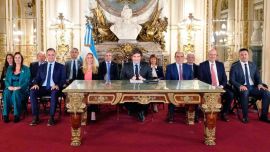
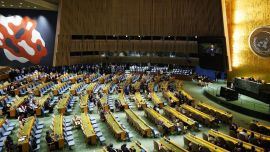
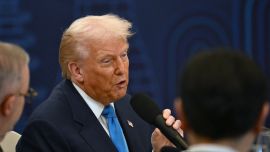

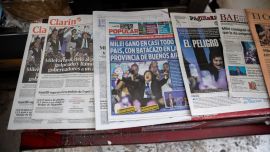
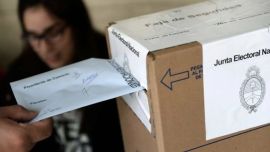
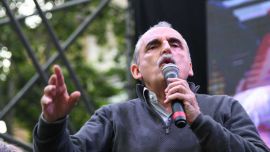



Comments